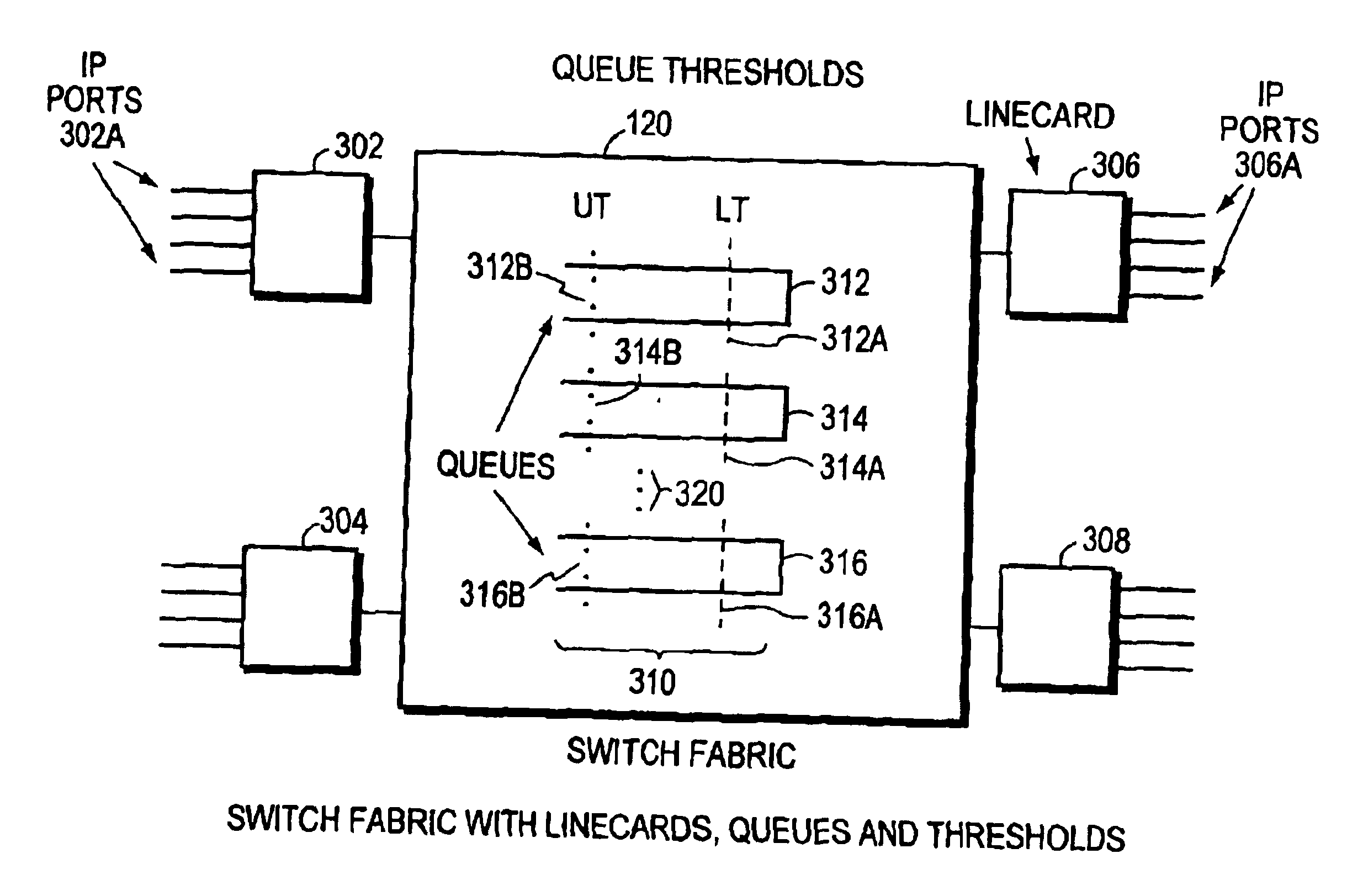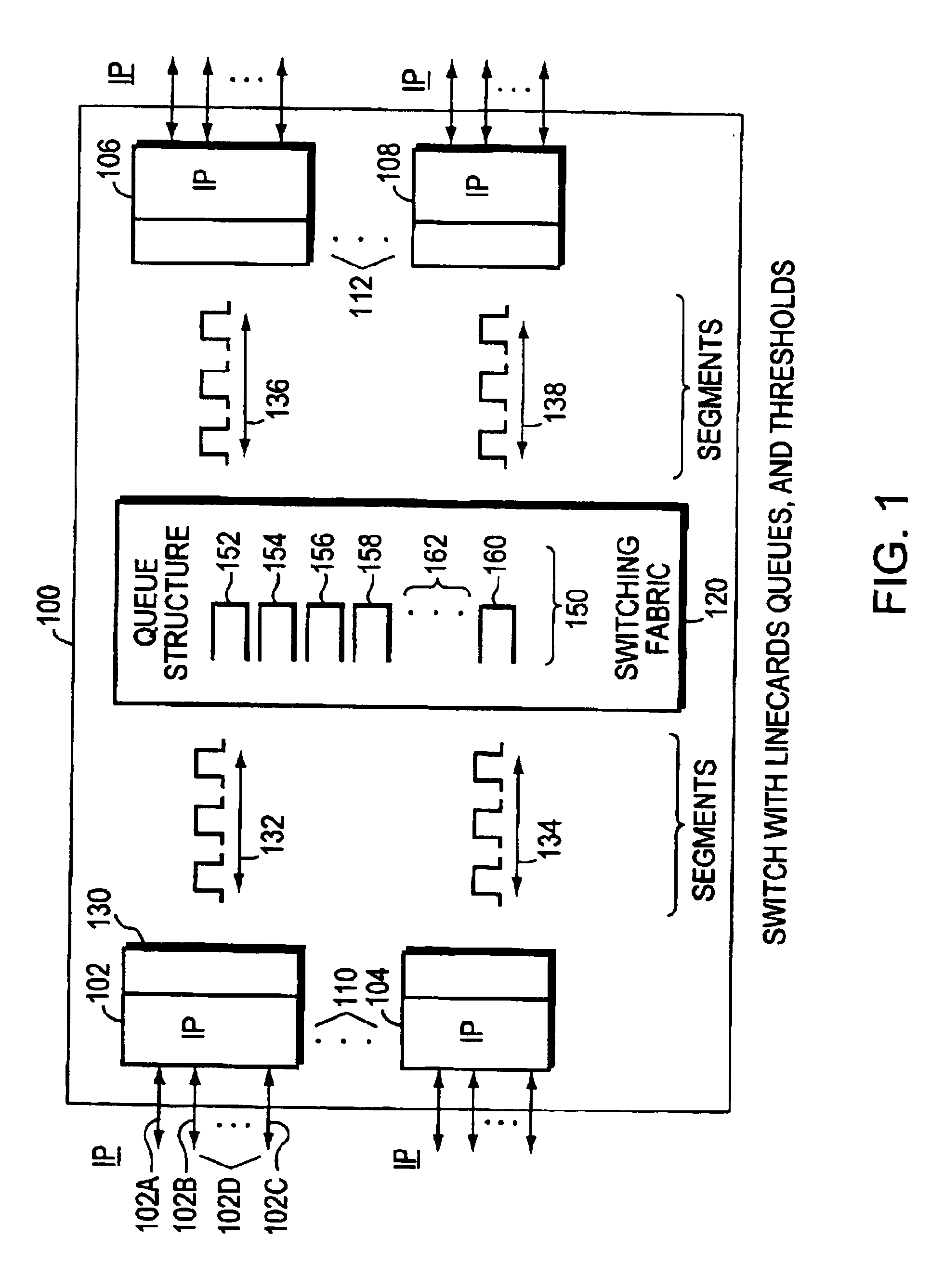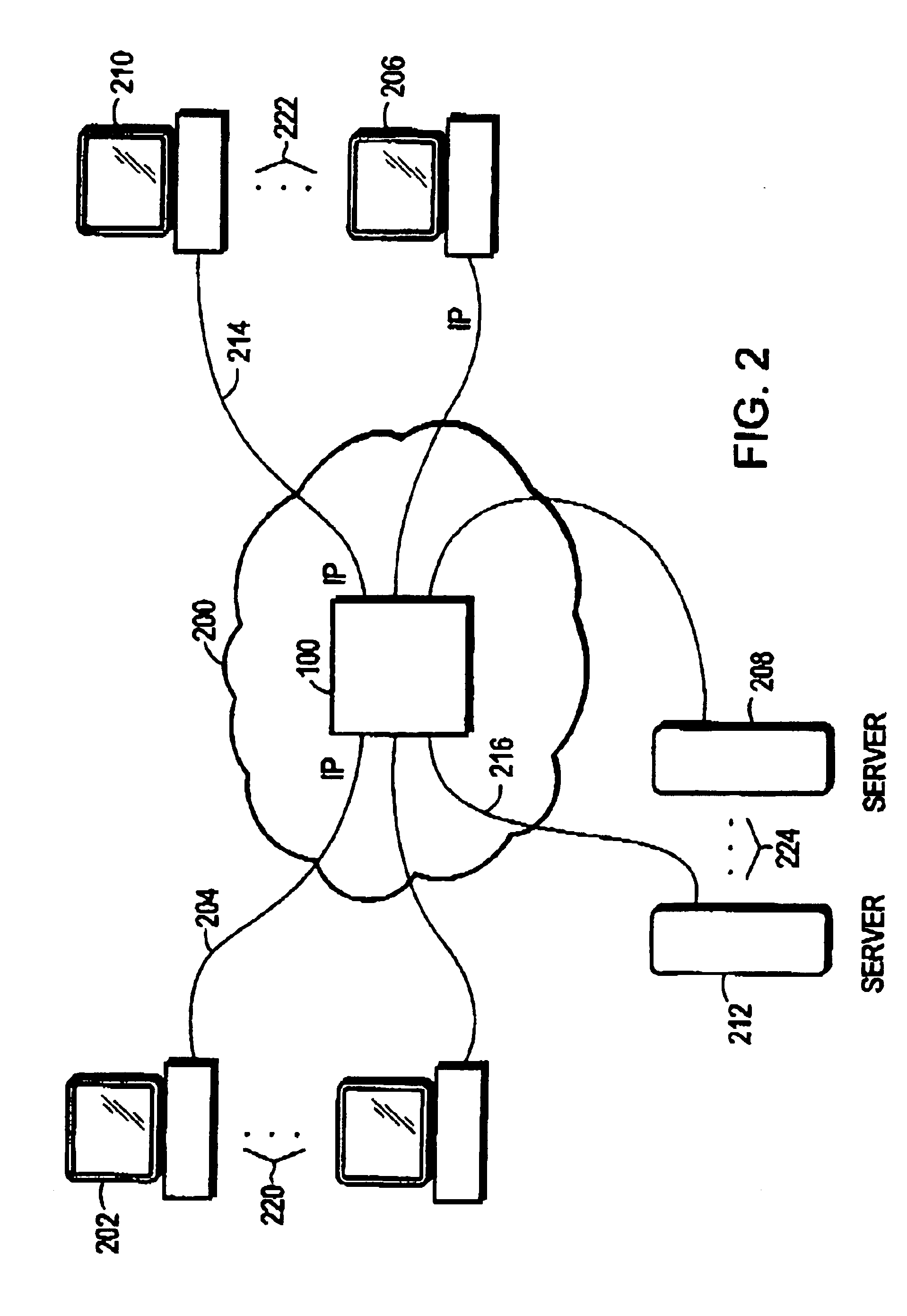Random early detection (RED) algorithm using marked segments to detect congestion in a computer network
a computer network and random early detection technology, applied in data switching networks, store-and-forward switching systems, multiplex communication, etc., can solve problems such as waste of network bandwidth, undesirable network synchronization, and lost headed toward the destination computer, and achieve the effect of smooth variations in computed parameters and easy handling of multiple drop preferences
- Summary
- Abstract
- Description
- Claims
- Application Information
AI Technical Summary
Benefits of technology
Problems solved by technology
Method used
Image
Examples
example 1
[0116]Assume 500 cells of each preference level are received from the switching matrix by the output port. Also assume that half of all cells are marked. Since the preference level is transparent to the marking mechanism, the fraction of marked cells and each preference level is the same (50%). Then:
Ne0 / Nt0+1=250 / 10000=0.25, and
Ne0+1 / Nt0+1=500 / 1000=0.5.
[0117]Thus, in addition to MaxPs, the drop probability Pd0 is further reduced by 50% relative to Pd1.
example 2
[0118]Assume 100 and 900 cells of preference level 0 and 1, respectively are received. Assume, as before, that half of all cells are marked. Then:
Ne0 / Nt0+1=0.05 and,
Ne0+1 / Nt0+1=0.5.
[0119]Consequently, the drop probability Pd0 of the preferred class is further scaled down by a factor of 10 relative to the less preferred class drop probability Pd1.
Simulations of Per-Class and Per-Class Per Preference Options.
[0120]Turning now to FIG. 15 (A-D), simulation results for per class and per class preferences are shown. Simulation results for the two options, per-class and per-class per-preference values of Ne / Nt are presented. The topology simulated is the same as shown in FIG. 10. To introduce traffic of different preference levels, one in each of the three TCP connections going into a first stage switch 10,001 as shown in FIG. 10, is classified as preference 0, with the other two connections preference 1. Thus a total of 10 connections are of preference 0, and 20 connections are of prefe...
PUM
 Login to View More
Login to View More Abstract
Description
Claims
Application Information
 Login to View More
Login to View More - R&D
- Intellectual Property
- Life Sciences
- Materials
- Tech Scout
- Unparalleled Data Quality
- Higher Quality Content
- 60% Fewer Hallucinations
Browse by: Latest US Patents, China's latest patents, Technical Efficacy Thesaurus, Application Domain, Technology Topic, Popular Technical Reports.
© 2025 PatSnap. All rights reserved.Legal|Privacy policy|Modern Slavery Act Transparency Statement|Sitemap|About US| Contact US: help@patsnap.com



